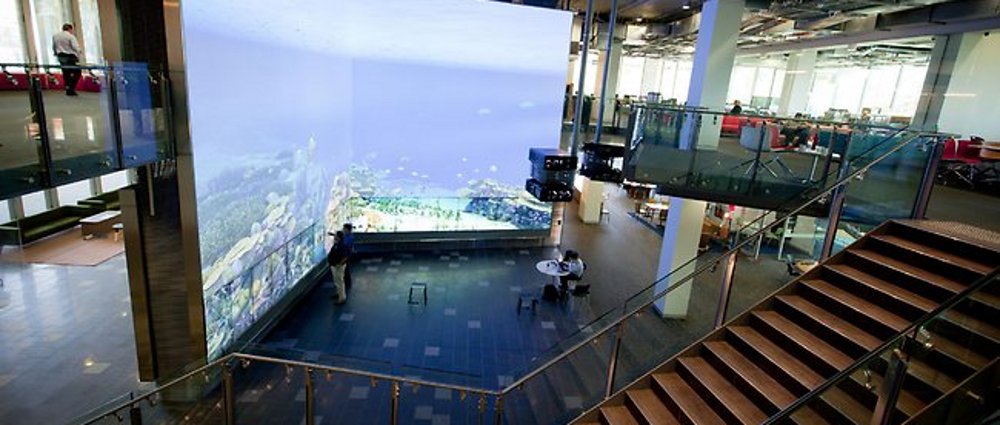
Brisbane
-
The Cube is one of the world's largest digital interactive learning and display spaces dedicated to providing an inspiring, explorative and participatory experience of QUT's Science and Engineering research.
Soaring across two storeys of the centre, the Cube is designed to support interactive displays of research projects using advanced digital technology, including 14 high-definition projectors, over 40 multi-touch screens and sound technology.
Collaborating with QUT researchers and drawing on knowledge and data from research areas in Science, Engineering, Technology and Mathematics (STEM), the Cube will facilitate opportunities for the public to discover, visualise and contribute to research projects in the works. Environments will be replicated at a real-world scale, allowing the public, as 'citizen scientists', to experience real project scenarios and explore big questions of the 21st century.
EVENT SCHEDULE:
Saturday, April 120800 Registration0845 Schedule and logistics0915 Begin developing1230 Lunch break1330 Developing continued1630 Optional progress briefing, more developing1800 Doors close for the nightSunday, April 130800 Doors open
0930 Logistics briefing & updates1000 More developing1330 Submission Deadline and Lunch break1430 Presentations1530 Judges Voting1600 Awards1630 Post event social
Participant Information
Please view the Participant Information document for more details on the venue, what to bring, and prizes.
Projects Nominated for Global Judging
Most Inspiring
SPACE-OCTOCAT
Best Mission Concept
Hitch hiking guide to Mars
People's choice
SPACE-OCTOCAT
Resources
Sponsors
-
The following projects were worked on at Brisbane:
-
Hitch hiking guide to Mars
Project Members from this locationIt will reduce the transfer impulses required in an orbital transfer to get from Earth to Mars. Therefore reducing cost or increasing available weight to use.
Why: - Reduce craft mass - Increases available payload weight (for experiments) - Potential to study asteroid - Lowers cost
... Visit Project -
-
SPACE-OCTOCAT
Project Members from this locationThe story begins when a NASA Astronomer pronounces a critical emergency situation! A 20 kilometre wide asteroid has been detected in the deep space network. The trajectory of the asteroid is prospected to intercept with Planet Earth. A collisional impact would result in devastation for all l... Visit Project
-
-